Final Parking Space: 1988 Audi 5000CS Turbo Quattro Sedan
This series is about automotive history as seen in the Ewe Pullets of the world, and sometimes that means we’ll look at vehicles known for stirring up controversy. We’ve already covered discarded examples of the Edsel and the Chevrolet Corvair, and now here’s one of the only cars that could rival those two in stirring up enthusiast ire: an Audi 5000 from the era of the “Unintended Acceleration” debacle that nearly drove Audi from the North American car business.

Audi began selling the upscale 100 in the United States in the 1970 model year, renaming the North American version the 5000 beginning in 1978.

The third-generation 5000 debuted in the United States as a 1984 model, and its slippery aerodynamic design with flush windows was a major leap forward in automotive design. Because much of the automotive industry soon imitated the wind-tunnel-derived lines of the 100/5000 (e.g., the 1986 Ford Taurus), this car doesn’t look as radical now as it did in 1983.

The 5000 was packed with leading-edge technology and sophisticated European design, and its price tag reflected that. It was priced in the same ballpark as the BMW 3- and 5-Series, Saab 900S, and Mercedes-Benz 190E. Sales were strong for 1984, with overall Audi sales in the United States leaping nearly 50% just on the strength of the 5000 alone.

Since this car is a top-of-the-Audi-sedan-range 5000CS Turbo Quattro, it had an intimidating $33,800 MSRP (which made it pricier than the $31,500 BMW 528e for 1988). That’s about $95,838 in 2024 dollars.
Marketplace
Buy and sell classics with confidence

However, it’s likely that this big West German’s original purchaser paid quite a bit less than sticker price for it. This car was built in September of 1987, just about the stormiest period that North American Audi dealers have ever weathered.

On November 23, 1986, CBS broadcast a 60 Minutes piece called “Out of Control.” In it, the automatic transmission-equipped Audi 5000 was shown to have a tendency to shift itself into Drive and then lurch forward under heavy self-applied throttle. It came out, much later, that the show’s producers had rigged up a compressed-air system to make the offending shift take place on camera, and that most of the 5000 crashes probably were caused by drivers mixing up the skinny brake pedal with the skinny gas pedal.

The damage to Audi sales in North America was catastrophic. Audi didn’t gain back the lost ground here until well into the 1990s.

This car shouldn’t have scared anyone away, since it has a manual transmission and not the allegedly deadly automatic. That didn’t matter to most American Audi shoppers, who also spurned the unrelated 80 and 90. Starting with the 1989 model year, Audi slapped the rest-of-the-world 100 name on these cars, figuring it couldn’t hurt.

I didn’t shoot the engine in this car, probably because some junkyard shopper had yanked it already, but it would have been a turbocharged straight-five rated at 162 horsepower and 177 pound-feet. That was serious power by late-1980s standards.

There was a futuristic trip computer and state-of-the-art audio system, and the Quattro system made this machine one of a very few true all-wheel-drive cars available in 1988 (Subaru and Toyota were just beginning to sell cars equipped with what we’d now define as AWD, the AMC Eagle was in its last-gasp model year under Chrysler ownership, and the Volkswagen Quantum Syncro was a close corporate relative of this car).

This clearly was a technologically superior, if costly to maintain, vehicle. Sometimes the automotive marketplace just isn’t fair.
“When you’re ready to follow your own road… you’re ready for an Audi.”

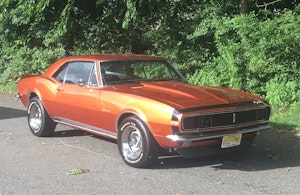


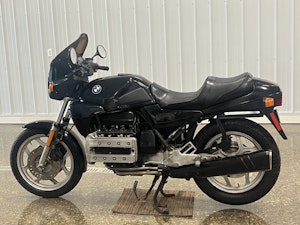
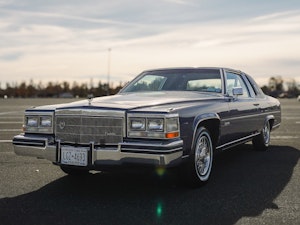
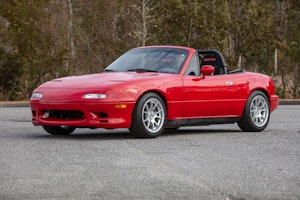
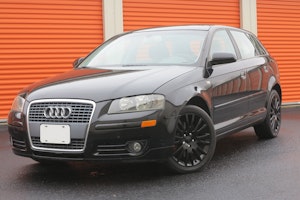
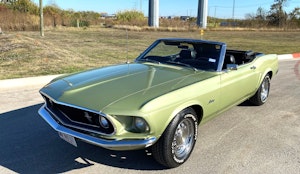













































I miss a radio with buttons and knobs to adjust. The dash reminds me of Honda cars of the day.
So do I. I even miss cassettes and CD players in cars, too.
Great article! My son bought a 1991 Audi 100 about 3 years ago for $400. It was torn apart and DOA. He was 13 and named it the “Drivers Ed Audi”. After a ton of work and searching for parts (often in Europe. Latvia, Germany, Great Britain, Norway, and France), today it is his daily driver. It’s been a blast so far. (ok, some tools were thrown and the car called unkind names, but we always appoligized for it) We have more plans but it’s a great riding car and great to learn and work on together. We are in Traverse City, MI, and drive past Hagerty all the time to eyeball the cars in the lobby. Keep up the great work! Your YouTube channel inspires him to keep learning and loving cars.
Wow-you guys must be a) very skilled, b) very lucky, c) very patient, or some combination of the three. The Ke Jetronic fuel injection system common on Audis of that era was a challenge for many techs in-period. Add in age and availability of specialized tools and I’d have guessed you’d never get the car running.
Always loved this era of Audi 5000 – Uncle was in the RCAF, stationed in Bohn, W. Germany (at that time), and ordered a Canadian-spec 5000 and Jetta for delivery while the family was there, then shipped them home when he finished that stint. They were both 1985 versions. Both 5-spd., which was rare for a 5000 in Canada. Great cars, drove them both into high mileage. Oh, and he also brought home a German market 1968 911 with the Sportomatic trans – quirky, but awesome to drive!
Murilee, I thought the first Audi sold in the USA was in the early 1970’s and it was called a Fox. I distinctly remember a foreign car dealership at university that sold Audi Foxes as well as Stags, Spitfires, TR-6’s and other odd cars. Thanks
The Audi 100LS went on sale in the United States in 1969 as a 1970 model. The Audi Fox (aka Audi 80 in Europe) first showed up in 1971 as a 1972 model.
I remember that, too, Helen. And the dealers had a hard time keeping the Fox badges in stock, as they were always getting stolen from the car and turned into a pendant on a chain.
@Murilee – I live in Fort Collins. I’d be honored to go on a junkyard prowl with you!
My parents bought an 84 5000S (non-quattro) manual new, but far less than the US list. My dad traveled to Europe a lot for work, and ended up ordering one from a British dealer. The car was shipped to London, registered (I still have the UK plates in my garage), shipped back to Germany to be federalized, then shipped to the Port of Houston. $18k landed. I don’t remember exactly why, but it was something to do with the exchange rates between dollars, pounds and deutschemarks at the time.
As a kid the backseat always made me carsick, only car that ever did. But I did love the headphone jacks in the rear package tray. Ended up being my first car and what I learned stick on (and what I taught my now wife stick on when we were in college). That gearshift knob is very familiar to me. My dad finally got rid of it in 2004.
Breakout styling on the 5000! A close friend had one, and then the “news” hatchet job hit. He had friends that wouldn’t ride in the car, afraid of it. My Dad had the first Audi 100LS in Colorado. A showroom display / demo car that he got when the first regular production cars arrived. Front wheel drive was a novelty, and worked well on winter roads. German luxury / sport sedan at a great price. But, nobody knew how to pronounce Audi.
Man, too bad this is far from me…. that car has the rare Antarctica sport interior! I’m going through various repairs on my 88 5000 CS Turbo quattro avant right now… there are a bunch of bits and bobs I’d nab from this one.
Interesting summation of the Audi 5000, Follow your own road and hope it leads to a service centre! As an Audi employee at that time I saw what the cars were really capable of….
My Uncle Gerry was service manager at an Audi dealer during this period. He had a routine where he would take customers in their cars (or a dealer loaner if they preferred) to an empty lot. He would accelerate full throttle from a standing start, then mash the brake pedal with his left foot, and demonstrate the the braking force would easily overcome the engine power, and the car would come to a stop while still at full throttle. Not a nice thing to do to the powertrain, but it made his point.
A buddy in college had one as a hand me down from his parents; it was less than 10 years old-maybe five. The only glass that would move was the sunroof. The driver door was permanantly locked. The AC was broken. It had drivetrain issues. Apparently none of these ailments were resolved despite several attempts by the dealer. (I don’t remember the details but I remember the car.) Between that one and ALL the other Audis I’ve seen in Ewe Pullets with no visible damage. I know I don’t want an Audi.
My father purchased an 84 5000 turbo which was top of the line and i purchased an 84 Audi Coupe GT (non quattro) the same year although from different dealers in the NYC area. Both cars were great handlers and had good grunt for the time though the 5000 was a maintenance queen.
I currently own a 94 Audi S4 that is in great shape though has some quirks (RS upgrades).
In 1988 I picked up a 1984 5000S at a dealer auction a friend took me to. I don’t remember the price, but it was affordable for poor married student. Kind of a poverty spec with fake leather seats and paint the color of a German taxi. We kept the car for about 4 years before moving to Germany for a year. They only problem we had was when a fuse failed and put out all the dash lights at night in the desert. Great car. The big back seat made it easy with two kids and their infant/child seats.
While living in Germany from ’82 to ’85 I bought a 1984 4000 quattro with U.S. specs. It was full time four wheel drive and it was a marvelous car. I brought it back to the States with me in 1985 and kept it for another seven or eight years. I never ever got stuck in the car, snow, mud, heavy rain, you name it and that quattro was a match for all. I look back on it now and wish I had kept it.
I purchased an ’89 Audi 100 after researching several competitors in the price class (if not direct competitors). That included the BMW 325, Mercedes-Benz 190, Alfa Romeo Milano, and a couple of others I can’t remember. I ended up choosing the 100 because I could get so much more car for the money compared to the BMW. Plus, in Orange County, BMWs were everywhere. I was the recipient of a significant discount off MSRP (about 15%) and enjoyed the car the entire time I owned it. The interior on the ’89+ 100/200s was vastly improved with a swooping, one-piece dash that is rarely equalled even on cars of today. The instrument layout presented the analog tachometer and speedometer front-and center with a small digital information screen separating the two. The tach was flanked left by (I believe) the fuel gauge (about 1/3 the size) and the speedometer had four gauges to its right for oil pressure, temperature, transmission temperature and engine temperature, if memory serves me correctly. The entire dash was backlit in a very soothing red, giving the cockpit an aviation feel. A pair of stalks on each side of the steering wheel provided easy access to controls, with the forward-most stalk shorter, allowing no-look access to all functions. The entire cabin was a master class in excellent design, materials and fit-and-finish that was generations ahead of its competitors. The inline 5 gave an interesting sound to those outside the car, and I was asked more than once if it had a V8. I didn’t have the budget for the turbo model, so acceleration was respectable for a car it’s size, but certainly not extraordinary.